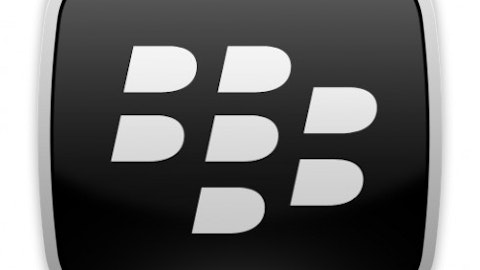Over the weekend, news got out that JPMorgan Chase & Co. (NYSE:JPM)‘s board of directors was actively lobbying its largest shareholders to keep Jamie Dimon in his dual roles of chief executive officer and chairman: This in the wake of growing discontent over how Dimon handled last year’s London Whale trading incident, and in response to a shareholder proposal to separate the roles of CEO and COB.

Though I normally argue the opposite, in this situation, the board is absolutely right, and is on the side of investors.
The case against the same person as CEO and COB
The pitch I’m used to making goes something like this: CEOs in any business are the top dogs, essentially dictators. Their word is typically the final word on all things.
Ideally, of course, these dictators are open-minded people whose egos are in enough natural check to not only hire smart people to advise them, but to actually listen to them, as well. This is the “benevolent king” model. But because absolute power can corrupt absolutely, this model doesn’t always work out.
So, corporations have boards of directors, which are headed by chairmen. Because chairmen of the board (COBs) — in concert with the boards — have the power to hire and fire CEOs, they’re in the ideal position to check the absolute power of CEOs who have run amok.
On a less menacing note, an independent chair can also offer CEOs unfiltered and perhaps even uncomfortable advice on running the business they might not get from underlings who fear that speaking their minds may cost them their jobs.
Theoretically, then, separating the roles of CEO and COB should make a business healthier and more profitable.
The case for Jamie Dimon in both roles
It’s an old argument, and possibly a dangerous one, but I’m going to make it anyway: Jamie Dimon is so good at what he does, that the benefits of him simultaneously occupying the positions of CEO and COB outweigh the potential dangers.
Dimon became president and chief operating officer at JPMorgan Chase & Co. (NYSE:JPM) when the superbank merged with Bank One in 2004, where Dimon had been also been CEO and COB. He became CEO at JPMorgan Chase & Co. (NYSE:JPM) in 2005, and COB in 2006. It was those middle years of the 2000s — when the most dangerous part of the housing bubble formed — that Dimon proved his mettle as the bank’s leader.
As qualified homebuyers began to run out, banks turned to unqualified applicants — or subprime borrowers — to keep the mortgage-securitization machine humming and big profits rolling in. But Jamie Dimon was (and still is) a risk control freak, and he kept the bank’s subprime shenanigans to a minimum. This kept JPMorgan Chase & Co. (NYSE:JPM) not only solvent during the financial crisis, but actually strong — strong enough to be able to buy Bear Stearns as it was collapsing under the weight of its own toxic mortgage debt in March of 2008.
And JPMorgan has generally been on a roll ever since, racking up big revenues and big profits even when other big banks — like Bank of America Corp (NYSE:BAC) and Citigroup Inc. (NYSE:C) — continue to struggle not only with their own crisis-damaged balance sheets, but with the difficult economic conditions their own risk-fraught behavior helped create.
And now we come to the proximate cause of the shareholder proposal to pry apart the roles of CEO and COB at JPMorgan: the London Whale, last year’s botched derivatives trades that have racked up more than $6 billion dollars in losses. Dimon’s original, and now infamous, comment on the then-developing scandal was that it was a “tempest in a teapot.” I’m going to back him up on that.
A $100 billion bet that results in a $6 billion-or-so loss is significant, but not the heart-stopping event it’s been made out to be. JPMorgan Chase & Co. (NYSE:JPM) is the biggest bank in the country, with more than $2 trillion in assets. Relatively, then, the size of the London Whale’s bet and the resulting cost is not so alarming. Over the past year, the bank was never in danger of failing, and it even managed to remain profitable throughout.
In the meantime, Dimon battened down the bank’s risk-management hatches more tightly than ever, replacing most of top management with hand-picked people, some of whom who helped JPMorgan Chase & Co. (NYSE:JPM) successfully navigate the London Whale situation, all while setting up a CEO-succession order in the process.
Foolish bottom line
So now Dimon faces a non-binding shareholder proposal to separate the roles of CEO and COB. At Goldman Sachs Group, Inc (NYSE:GS), CEO and COB Lloyd Blankfein is fighting a similar fight.
There’s something in the air right now. Shareholders in many sectors are becoming more active and trying to make their voices heard. This is overall an excellent thing.
In 2012, a similar shareholder proposal at JPMorgan garnered a 40% “yes” vote. Chances are that this year, given how people are feeling about the London Whale, that percentage will be higher.
Even though it’s non-binding, a majority vote could push the board to make the move anyway. If this happens, Dimon may choose to up and leave. It would be a big change for how he and the bank operate, and for all the reasons stated above, I don’t think the bank can afford to lose him. The big banks aren’t out of the challenging economic woods yet; there’s still danger out there.
B of A has a separate CEO and COB. So does Citigroup Inc. (NYSE:C), and neither of those banks are performing at the level of JPMorgan. Separating the roles, then, doesn’t automatically guarantee a healthier bank or more profit.
JPMorgan Chase & Co. (NYSE:JPM) is performing beautifully for customers and for investors, and Dimon is still the best risk manager in banking. Investors need to put the London Whale into perspective and keep Dimon at the helm. Or in this case, both helms.
The article Why JPMorgan Needs Jamie Dimon in Both Roles originally appeared on Fool.com and is written by John Grgurich.
Fool contributor John Grgurich owns shares of Goldman Sachs, Citigroup, and JPMorgan Chase. Follow John’s dispatches from the bleeding heart of capitalism on Twitter @TMFGrgurich. The Motley Fool recommends Goldman Sachs. The Motley Fool owns shares of Bank of America, Citigroup, and JPMorgan Chase.
Copyright © 1995 – 2013 The Motley Fool, LLC. All rights reserved. The Motley Fool has a disclosure policy.

